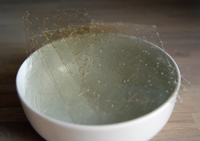
Photo from wikipedia
Abstract Cracks in concrete remain one of the major issues in constructions. Self-healing concrete by bacteria has already proven to be a promising way to solve this problem. In order… Click to show full abstract
Abstract Cracks in concrete remain one of the major issues in constructions. Self-healing concrete by bacteria has already proven to be a promising way to solve this problem. In order to protect bacteria from the harsh condition in concrete, encapsulation of bacteria is preferable. In this study, a pH responsive hydrogel was synthesized to encapsulate bacterial spores for self-sealing concrete cracks. The pH responsiveness and the influence of the hydrogel on the mechanical properties were investigated. The viability of the encapsulated spores and the cell-entrapping capacity of the hydrogel were then examined. The self-sealing efficiency was evaluated by the reduction of water flow and crack sealing ratio. The results indicated that the chitosan based hydrogel had a suitable pH responsiveness. Within the pH range between 7 and 11, the swelling capacity remained stable, with no significant differences as the swelling varied between 38.5 ± 0.5 and 42.9 ± 1.5 g water/g hydrogel. The swelling greatly decreased to around 12.8 ± 0.9 g water/g hydrogel in cement filtrate. The compressive strength only decreased around 5% with the addition of 1 m% of hydrogel. The specimens with hydrogel encapsulated spores showed the highest reduction in water flow (81–90%) and highest crack sealing efficiency. More than 30% of the crack locations was completely bridged. While in other specimens, only 2–12% of the crack locations was completely sealed.
Journal Title: Cement and Concrete Composites
Year Published: 2018
Link to full text (if available)
Share on Social Media: Sign Up to like & get
recommendations!